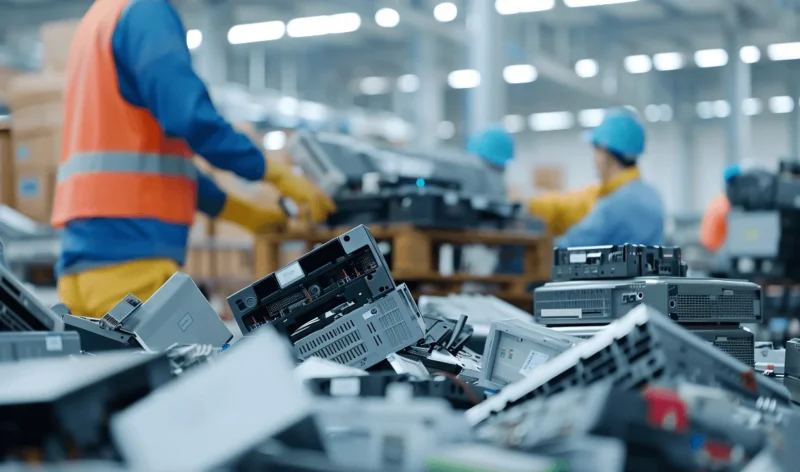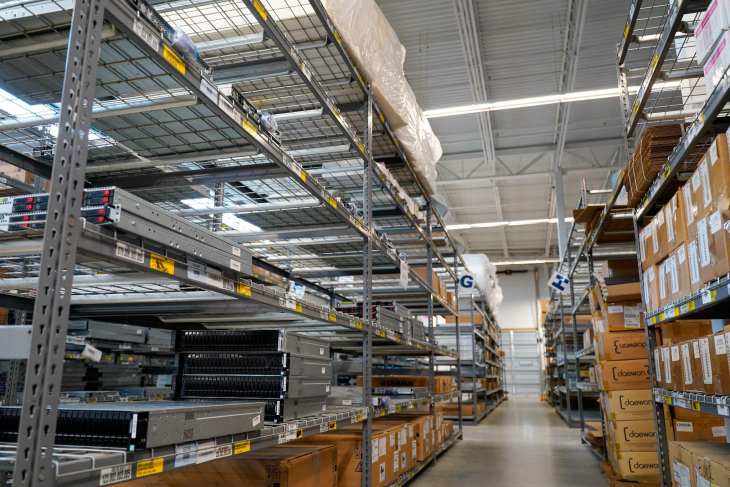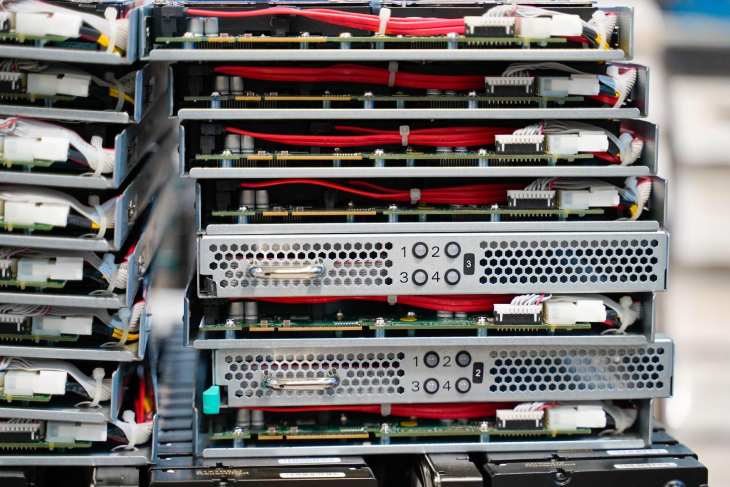Understanding IT Asset Disposition: A Comprehensive Guide

IT Asset Disposition (ITAD) is the process of safely and responsibly disposing of outdated or unwanted IT equipment. The process is more complicated than it might seem at first glance, because many electronic devices store data that could potentially be sensitive or confidential, and because circuit boards and other electronic components often contain small amounts of materials that could be toxic under certain circumstances.
Best practices in ITAD call for a systematic approach to data wiping and the recycling or repurposing of hardware. Sound ITAD processes minimize an array of risks, including data breaches, harm to the environment, and range of potential compliance issues.

Most people think of unwanted IT assets in terms of the physical equipment that might be sitting in a closet somewhere, or stacked in the corner of the company’s in-house tech repair facility. ITAD companies take a more comprehensive view that encompasses all of the hardware, software, and data within an organization’s control.
Consider what happens, for example, when a large healthcare organization returned a number of printer/copiers at the end of their lease, without permanently erasing the sensitive data they contained. Federal investigators concluded that the company inadvertently disclosed the protected health information of nearly 350,000 people, violating HIPAA, and levied a fine of over $1.2 million.
Responsible business practices dictate that businesses follow best practices in IT asset disposition. Otherwise, they run the risk of running afoul of regulators, customers, and public opinion.
The ITAD Process
IT asset disposition companies address all of the key steps required for managing retired IT assets securely and responsibly. During the collection phase, unwanted equipment is gathered and transported to a central facility, where they are assessed for potential reuse or resale.
Then, the ITAD company will ensure that all data contained on these devices is destroyed. They can accomplish this by using specialized software that securely and permanently makes any existing data irretrievable, by physically destroying storage media such as hard drives, or by other means like degaussing.
Finally, the ITAD company disposes of each asset, by refurbishing and reselling it, by salvaging parts, or by breaking it down for recycling for responsible disposal
The ITAD process’s key stages, – collection, assessment, data destruction, and disposal, – each play a vital role in achieving the end goal of responsible and secure asset disposition. Together, they make up a comprehensive strategy that protects data, advances environmental responsibility, and ensures compliance.
Why ITAD is Crucial
The aforementioned example involving a large healthcare organization is by no means an isolated incident. Morgan Stanley was compelled to pay fines of over $60 million after some of their retired IT devices were sold on eBay, with hundreds of thousands of customer records intact. They also faced lawsuits from shareholders and customers, as well as a raft of bad publicity. Every week, it seems, we read about yet another data breach or ransomware incident in the headlines. Bad actors use a variety of different techniques to gain access. Acquiring old IT equipment is a favored method, in large part because it is so difficult to trace, and because harvesting information is easy if those devices have not been properly wiped clean. Proper IT asset disposition eliminates that risk for your company.

Government leaders, corporations, and consumers are increasingly scrutinizing environmental practices as well. The responsible disposal of IT assets is critical for companies in improving compliance, reducing their risk exposure, and furthering their corporate social responsibility goals. Green practices can lead to cost savings and enhance a company’s reputation, fostering a positive relationship with increasingly eco-conscious consumers and stakeholders.
Methods of Disposal in ITAD
ITAD companies offer a range of methods for disposing of unwanted assets. Data destruction is essential because it ensures that sensitive information is rendered completely irretrievable. Merely deleting a file from your computer does not actually erase the data from your hard drive. Using simple, widely available software, virtually anyone can retrieve data from deleted files.
True data destruction eliminates that possibility altogether. This can be achieved through secure erasure, which involves overwriting existing data with random data. That allows hard drives to be sold and re-used, without any risk of a data breach.
Another method is degaussing, which uses powerful magnets to disrupt the magnetic fields on storage devices like hard drives, rendering the data unreadable. This tends to be expensive because it requires specialized equipment and handling. It also destroys the hard drive itself, making it unusable. For organizations that require the very highest level of data security, a more popular option is physical destruction, including hard drive shredding.
When data destruction is complete, ITAD service providers will assess each piece of equipment to determine whether it can be repurposed in some way. By recycling and refurbishing devices, they can extend the useful life of those items, recapturing value and reducing any negative environmental impact.
If refurbishment and resale is not a viable option, the ITAD company will dismantle devices to salvage parts, or to reclaim materials such as metals and plastics through recycling.
Challenges in IT Asset Disposition
Naturally, managing logistics and costs are important throughout the ITAD process. Companies may not always have a reliable inventory of the assets they are handing over. The best ITAD service providers have clear procedures for collecting equipment, assessing incoming inventory, and documenting every step of the process.
There are also important logistical considerations when it comes to security. Ensuring data security during the disposal process is paramount, so the best ITAD companies follow rigorous protocols to ensure an unbroken chain of custody. This should include transportation on sealed vehicles, operated by drivers who have undergone thorough background checks. Video surveillance is also important.
Top companies in the ITAD industry must also be agile and adaptable. They must accommodate rapidly changing technology, and must keep up with regulations across the various jurisdictions in which they operate. An evolving regulatory landscape demands that ITAD companies remain well informed and fully compliant with requirements. By fostering a culture of innovation and compliance, the best ITAD companies can successfully navigate these changes to ensure they continue to support their customers’ evolving needs.
Choosing an ITAD Provider
When you are selecting an ITAD service provider, look for a company with a long track record of customer satisfaction. Find out what the organization’s existing clients say about them, and ask how long they have been in business. Inquire about the ITAD company’s reporting and auditing processes. Look for high levels of transparency, comprehensive reporting, and strong customer service.
Certifications and standards are critical indicators of a reliable ITAD service provider. Look for certifications like e-Stewards, which is a hallmark of responsible electronic recycling and data security practices. ISO 9001 and ISO 14001 certifications indicate adherence to quality management and environmental management systems, respectively. Compliance with these standards and certifications not only guarantees the provider’s commitment to best practices but also helps mitigate legal and environmental risks.
Conclusion
ITAD is essential to the responsible and secure disposal of unwanted IT equipment. By working with the right ITAD service provider, you can reduce the risk of a data breach, improve sustainability, ease compliance, and recover value from retired assets.
By incorporating ITAD into their processes and policies for IT asset lifecycle management, companies can reduce risk, lower their IT costs, and advance a culture of sustainability. Want to learn more? Reach out to one of NCS Global’s ITAD experts to talk about your needs.